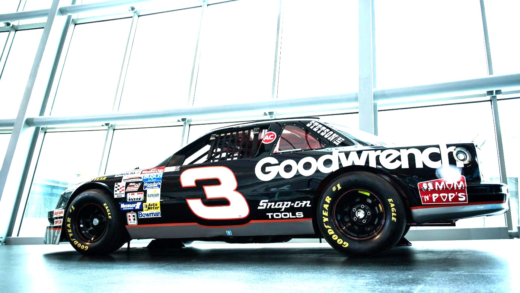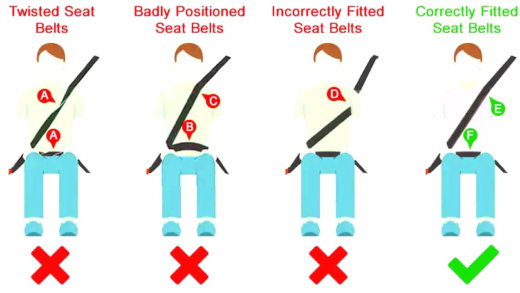Synchronized driving enhances road safety and efficiency through coordinated vehicle movements. Key benefits include improved safety, increased fuel efficiency, and aesthetic appeal during performances. However, risks such as miscommunication and environmental factors must be managed carefully.
Understanding Synchronized Driving: What Is It?
Synchronized driving refers to the coordinated movement of vehicles, often performed in unison to enhance safety, efficiency, and aesthetics on the road. This technique can be seen in various scenarios, including performance driving and professional racing. It emphasizes the importance of timing, precision, and communication among drivers.
In synchronized driving, participants must possess a high level of skill and awareness. Key elements include:
- Coordination: Drivers work together to maintain consistent speeds and spacing, ensuring that their vehicles move as one cohesive unit.
- Communication: Effective signaling and non-verbal cues are crucial for maintaining synchronization, especially in dynamic environments.
- Focus: Concentration is essential to execute maneuvers accurately and respond to any changes in road conditions.
Types of vehicles that are commonly used in synchronized driving include performance cars, motorcycles, and specialized stunt vehicles. Each type offers unique advantages and challenges, making it important for drivers to select the right vehicle for their synchronized driving routines.
For example, in professional racing, synchronized driving helps teams optimize their strategies during competitions. By moving in tandem, drivers can draft behind each other to reduce air resistance, thereby increasing speed and efficiency. Similarly, synchronized driving is often utilized in stunt performances, where multiple vehicles execute complex maneuvers in harmony.
In conclusion, synchronized driving is an art form that requires practice, skill, and a deep understanding of vehicle dynamics. It not only enhances the visual appeal of driving but also promotes safety and efficiency on the roads. As more drivers embrace this technique, the potential for innovative applications continues to grow.
How Synchronized Driving Works in Practice
Synchronized driving involves a series of precise maneuvers that require drivers to work in harmony. This technique is not just about fancy moves; it’s a critical skill in various driving scenarios. When executed correctly, it enhances both performance and safety on the road.
One practical application of synchronized driving is seen in professional racing. Here, teams use synchronized tactics to maintain speed and optimize fuel efficiency. For instance, during a race, drivers will often align their vehicles to reduce wind resistance, allowing them to gain speed without extra effort. This tactic, known as drafting, illustrates how synchronized driving can lead to competitive advantages.
In addition to racing, synchronized driving is also prevalent in stunt performances. Stunt drivers coordinate their movements to create breathtaking displays. They perform complex routines, such as simultaneous turns or jumps, showcasing not just skill but also a deep understanding of vehicle dynamics. The coordination involved requires extensive practice and clear communication between drivers.
Moreover, synchronized driving can be beneficial in everyday situations, such as in traffic. When multiple vehicles maintain a steady pace and spacing, it can lead to smoother traffic flow and reduced congestion. This coordination can be especially useful during parades or public events where multiple vehicles need to move together safely.
To achieve effective synchronized driving, drivers must develop specific skills, including:
- Timing: Understanding when to accelerate or decelerate in relation to other vehicles.
- Spatial Awareness: Being aware of surrounding vehicles and their movements.
- Communication: Using turn signals and other non-verbal cues to signal intentions.
In conclusion, synchronized driving is a practical skill that enhances both performance in competitive settings and safety in everyday driving. By mastering this technique, drivers can improve their driving experience while also contributing to road safety.
Benefits and Risks of Synchronized Driving
Synchronized driving offers numerous benefits, enhancing both safety and efficiency on the road. The primary advantage of synchronized driving is the improved coordination among drivers, which leads to smoother traffic flow. When vehicles operate in unison, it reduces the likelihood of collisions and creates a safer environment for everyone on the road.
Some key benefits include:
- Enhanced Safety: By maintaining consistent speeds and spacing, synchronized driving minimizes the risk of accidents. Drivers are more aware of their surroundings, which helps in making quick decisions.
- Increased Efficiency: Vehicles that drive in sync can save fuel and reduce emissions. This is particularly important in professional racing, where drafting techniques allow teams to optimize speed and fuel usage.
- Aesthetic Appeal: Synchronized driving can be visually stunning, especially during stunt performances or parades. It captures the audience’s attention and showcases the skill of the drivers involved.
However, synchronized driving is not without its risks. The most significant challenge is the reliance on communication and coordination among drivers. If one driver fails to perform their part, it can lead to disastrous consequences. Other risks include:
- Miscommunication: A lack of clear signals or cues can lead to misunderstandings, resulting in accidents.
- Overconfidence: Drivers may become too confident in their abilities, leading to reckless behavior on the road.
- Environmental Factors: Weather conditions can affect synchronization. Rain or fog can reduce visibility and make coordination difficult.
In conclusion, while synchronized driving offers numerous advantages, it requires a high level of skill and awareness. Drivers must understand the risks involved and practice effective communication to ensure safety on the road. With the right approach, synchronized driving can be a powerful tool for enhancing road safety and efficiency.





Comments are closed.